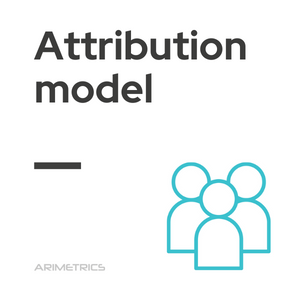 Definition:
Definition:
An attribution model is an analytical approach that allows to evaluate how different ads and touch points contribute to a sale or conversion throughout the sales funnel. This funnel represents the consumer journey from initial awareness to the final purchase decision. Unlike the traditional method that assigns all credit to the last ad viewed, an attribution model distributes credit across all customer interactions, providing a more complete view of each ad’s impact. This helps marketers optimize their marketing strategies and maximize return on investment(ROI).
Objective of attribution models
The goal behind attribution models is to get a complete picture of what’s happening across each marketing channel and understand the degree of influence each ad has on consumers’ decisions. By using an attribution model to track and analyze multiple touchpoints, marketers can gain new insights, optimize campaigns, and get a more accurate read about a campaign’s ROI.
How to choose an attribution model
One of the biggest challenges in creating an attribution model is determining the amount of credit to assign to each touch point. Marketers must evaluate the degree to which each ad influenced the conversion process. For example, was it the first ad that captured the consumer’s attention or was it a subsequent reminder that led to the final purchase decision? This evaluation can be complicated by multiple factors, such as ad exposure time, market saturation, products sold and budget spent. In addition, an effective attribution model must consider the uncertainty inherent in consumer behavior. External factors such as recommendations from friends, exposure to ads in different media (magazines, television, social networks) and other stimuli can influence the purchase decision, which makes accurate attribution even more challenging. To ensure accuracy in assigning credit to each ad, analysts must continuously test and recalibrate attribution models on a regular basis. This dynamic approach enables marketers to develop robust models that facilitate more informed and effective marketing decisions.
Types of attribution models
There are several types of attribution models that marketers can consider, each with its own advantages and disadvantages:
- Last-click model: Assigns full credit to the last ad clicked before conversion. It is simple, but may not reflect the true impact of other ads on the decision process.
- First-click model: Attributes all credit to the first ad the consumer saw. This model can be useful for understanding which ads generate awareness, but ignores the effect of subsequent ads.
- Linear model: Distributes credit equally among all the ads the consumer encountered in their buying journey. This provides a more balanced view, but may oversimplify the influence of each touchpoint.
- Time decay model: Assigns more credit to ads that were viewed closer to the time of conversion, recognizing that ad relevance may decline over time.
- Engagement-based model: Uses advanced algorithms to evaluate the impact of each ad based on multiple variables, providing a more accurate and personalized view.
When choosing an attribution model, it is crucial that marketers consider their specific objectives, the behavior of their audience, and the resources available to implement and maintain the selected model.
